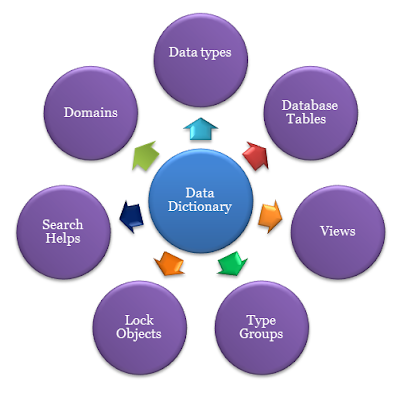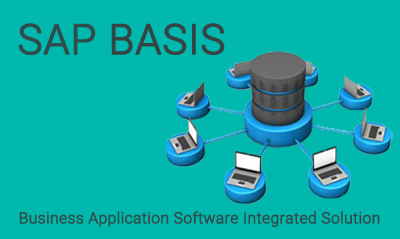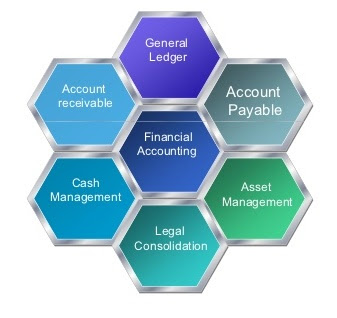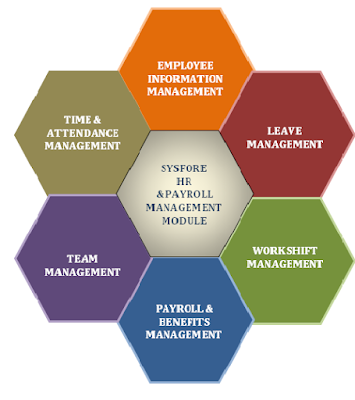 |
| SAP BASIS Interview |
1) What is SAP BASIS?
Ans:- SAP BASIS acts as an operating system or a platform for SAP applications to run.It supports the entire range of SAP applications.
2)What are the functional modules used in sequence in BDC?
Ans:- There are 3 types of functional modules which can be used in a sequence in BDC.
a) BDC _OPEN_GROUP: This module contains Name of the client, sessions and user name which is specified in modules
b) BDC_INSERT: This module is used to insert the data for one transaction into a session.
c) BDC_CLOSE_GROUP:This module is used to close the batch input session.
3)What is an OK code and what is the main difference between t-code and OK code? Ans:- An OK code is used by a program to execute a function .t-code stands for Transaction code.The t-code is used as a shortcut that helps a user to run a program.
4)How client refresh is different than client copy? Ans:- Copying or over writing to an existing client is called as client refresh and copying to the newly created client is called as client copy.
a) BDC _OPEN_GROUP: This module contains Name of the client, sessions and user name which is specified in modules
b) BDC_INSERT: This module is used to insert the data for one transaction into a session.
c) BDC_CLOSE_GROUP:This module is used to close the batch input session.
3)What is an OK code and what is the main difference between t-code and OK code? Ans:- An OK code is used by a program to execute a function .t-code stands for Transaction code.The t-code is used as a shortcut that helps a user to run a program.
4)How client refresh is different than client copy? Ans:- Copying or over writing to an existing client is called as client refresh and copying to the newly created client is called as client copy.
If you are performing copying to an existing client for the purpose of updating data then it's a client refresh.
when you are copying to newly created client then it is called as client copy.
when you are copying to newly created client then it is called as client copy.
5)What is a background processing batch scheduler?
Ans:- To check the schedule background jobs and to execute them parameters like rdisp/btc time is used. These parameters define background processing batch scheduler.
6) what is a SAP IDES? Ans:- SAP IDES stands for SAP Internet Demonstration and Evaluation System.SAP IDES is mainly used for testing & training purpose.It's a internal demo system which contains data of IDES company.It can supports demo,self study & functional test based on a preconfigured data or clients.
7)What is the purpose of TDEVC ? Ans:- TDEVC is a standard SAP table which is used to store packages information.The main purpose of TDEVC is to contains development classes and packages.
8) List the types of work processes are there in SAP ?
Ans:- There are seven types of work processes as follows:
- Dialog
- Update
- Background
- Spool
- Message
- Server
- Gateway
Ans:- If the user request for the some data then application server connects to the database server and returns an appropriate output. The main task of Application Server is to take input from user,connect it to database server & gives output.
10) How to perform the transport? what are the roles of CTS?
Ans:- Transport can be done through STMS_IMPORT or through FTP.
CTS stands for change & transport system.
The roles of CTS are as follow:
1. Managing Transports.
2.Recording of where & by whom changes are made.
3.Configuring systems landscape.
4.Administrating & Controlling new development requests.
3.Configuring systems landscape.
4.Administrating & Controlling new development requests.
11) What are the types of transport queries? Ans:-
a) Customizing Request
b) Workbench Request
c) Transport of Copies
d) Re-location
b) Workbench Request
c) Transport of Copies
d) Re-location
12)What is business KPIs ?
Ans:- Business KPIs stands for Key Performance Indicator. KPIs measures your companies performance against business objectives. It indicates the performance of a company at a strategic level. It helps to measure companies performance with its previous performance & it will help to take strategic decision regarding sales, marketing and finance.
13)What is the importance of table T000?
Ans:- Table T000 is a SAP Table in which you can contain list of defined clients, and we can maintain transaction code SCC4.
Table T000 contains client information.
14)What is SAPS ?
Ans:- SAPS stands for SAP Application Performance Standard, which is a hardware independent unit which describes the performance of a system configuration in SAP environment.
15)What is the difference between Central Instance & Application Server?
Ans:- Application Server is just a dialog instance. Central Instance is a combination of dialog instance and database instance.
Central Instance has message server and dialog, update, spool, enque, gateway, background work processes. Application server has dialog, update, spool, gateway and background work process.
16)How to check whether a system is Unicode or Non-Unicode?
Ans:- By using code sm51 t-code we can check whether it is Unicode or non-Unicode. In this code we can find the release notes button in the application tool bar if you click on that you can see the total information like Database, Kernel version, Unicode or non- Unicode.
17)What are the types of transport requests & purpose in SAP BASIS ? Ans:- There are 4 types of Transport request as follows:
Ans:- Business KPIs stands for Key Performance Indicator. KPIs measures your companies performance against business objectives. It indicates the performance of a company at a strategic level. It helps to measure companies performance with its previous performance & it will help to take strategic decision regarding sales, marketing and finance.
13)What is the importance of table T000?
Ans:- Table T000 is a SAP Table in which you can contain list of defined clients, and we can maintain transaction code SCC4.
Table T000 contains client information.
14)What is SAPS ?
Ans:- SAPS stands for SAP Application Performance Standard, which is a hardware independent unit which describes the performance of a system configuration in SAP environment.
15)What is the difference between Central Instance & Application Server?
Ans:- Application Server is just a dialog instance. Central Instance is a combination of dialog instance and database instance.
Central Instance has message server and dialog, update, spool, enque, gateway, background work processes. Application server has dialog, update, spool, gateway and background work process.
16)How to check whether a system is Unicode or Non-Unicode?
Ans:- By using code sm51 t-code we can check whether it is Unicode or non-Unicode. In this code we can find the release notes button in the application tool bar if you click on that you can see the total information like Database, Kernel version, Unicode or non- Unicode.
17)What are the types of transport requests & purpose in SAP BASIS ? Ans:- There are 4 types of Transport request as follows:
a) Customizing request :
It contains client specific changes recorded in a single client.
b) Workbench request :
It contains client specific changes recorded in a single client.
b) Workbench request :
It contains changes made to the repository objects of ABAP work bench
c) Transport request :
It allows to transport any sub objects into object list to any other SAP system
d) Relocation :
It is used when development system of a complete package is to be changed on permanent basis.
18)What is logical system? Use of Logic system & How to create it ?
Ans:- Logic system is required to communication between system s within landscape. when you want to create a new client a logic system is required. Logic System is transportable.
It enables the system to recognise the target system as an RFC destination.
TCODE used is SPRO . Tcode is used to create logic system in SAP is BD54.
19)How to assign an object to 100 roles at time?
Ans:- Steps To assign an object to 100 roles at time,
a) Go to sell T-code from there go to the table agr_agrs.
b) You will be asked for Access key
c) Enter the objects that needs to be added to 100 roles
It allows to transport any sub objects into object list to any other SAP system
d) Relocation :
It is used when development system of a complete package is to be changed on permanent basis.
18)What is logical system? Use of Logic system & How to create it ?
Ans:- Logic system is required to communication between system s within landscape. when you want to create a new client a logic system is required. Logic System is transportable.
It enables the system to recognise the target system as an RFC destination.
TCODE used is SPRO . Tcode is used to create logic system in SAP is BD54.
19)How to assign an object to 100 roles at time?
Ans:- Steps To assign an object to 100 roles at time,
a) Go to sell T-code from there go to the table agr_agrs.
b) You will be asked for Access key
c) Enter the objects that needs to be added to 100 roles
d) Select the range of roles in which the object needs to be added
e) Save or Activate whatever option is given
20)What is the way to get a list of the users with development access on a particular system? Ans:- You can get the list of users with development access in the table DEVACCESS.
e) Save or Activate whatever option is given
20)What is the way to get a list of the users with development access on a particular system? Ans:- You can get the list of users with development access in the table DEVACCESS.
21)How to view locked transactions? Ans:- To view locked transactions you need to look in field CINFO, table TSTC.
Within SAP you can either use SE11 or SE16 to browse the table contents. Make sure that you enter A0 as the HEX01 data element for SYST starting value and A9 as the ending value. This will list all the transactions locked in the system.
22)What is an OK code? What are the differences between an OK code and T-code? Ans:- An OK code is used by a program to execute a function .t-code stands for Transaction code. The t-code is used as a shortcut that helps a user to run a program.
22)What is an OK code? What are the differences between an OK code and T-code? Ans:- An OK code is used by a program to execute a function .t-code stands for Transaction code. The t-code is used as a shortcut that helps a user to run a program.
23)List out steps to disable the Import All button on STMS for the queues?
Ans:- Steps are as follow:
a) Login to your Transport Domain Controller
b) Run STMS Overview System
c) Choose the system you want to disable „Import All‟
d) Go to Transport Tool tab
e) Add/Create parameter “ No_IMPORT_ALL” set its value to 1
24)What is SAP Notes ? How can you apply SAP notes to SAP system?
Ans:- SAP releases notes regularly to provide the corrections/minor improvement to the existing bugs/functionalities/issues.To solve customer issues & fix the bugs SAP Notes are used.
a) Go to Tcode SNOTE
b) GO TO Menu Download SAP Note
c) Give the Note No
d) After downloading check the status, if implemented
e) Select Note, GO TO Menu SAP Note Implement
25)What is the purpose of table USR02? Ans:- The main purpose of table USR02 is to store Logon Information like passwords and User IDS.
26)What are kernel replacement and support package? Ans:- Kernel replacement is the replacement of the SAP executable on the OS level, while support package contains fixes to the ABAP code within a SAP instance.
27)Which are the most frequent errors encountered while dealing with TRANSPORTS ?
Ans:-
Return code (4) indicates import ended with warning.
Return code (8) indicates not imported ended with error
Return code (12) indicates import is cancelled.
Return code (16) indicates import is cancelled.
28)What is a client copy ? how to create it ? Ans:- Client copy is transferring client specific data within same instances or different instances . You can do a client copy using the SCCL transaction
Return code (8) indicates not imported ended with error
Return code (12) indicates import is cancelled.
Return code (16) indicates import is cancelled.
28)What is a client copy ? how to create it ? Ans:- Client copy is transferring client specific data within same instances or different instances . You can do a client copy using the SCCL transaction
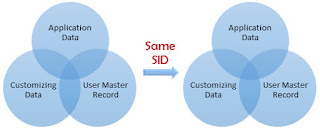 |
| Client copy |
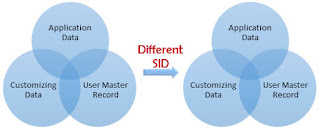 |
| Client copy |
29)What is the main difference between asynchronous and synchronous transport?
Ans:-
Synchronous Transport - Dialog or batch process are blocked until import is ended
Asynchronous Transport - Dialog or batch process is released after import is started.
30)What is Unicode ?How to identify whether your SAP server is Unicode or ASCII ? Ans:- Unicode is an international standard that assigns character from virtually every language & script a unique Unicode scalar value which is in form of number written in hexadecimal notation.
Asynchronous Transport - Dialog or batch process is released after import is started.
30)What is Unicode ?How to identify whether your SAP server is Unicode or ASCII ? Ans:- Unicode is an international standard that assigns character from virtually every language & script a unique Unicode scalar value which is in form of number written in hexadecimal notation.
To identification : Go to SM51 , Click Release Notes. Entry corresponding to ICU Version will tell you whether your system is ASCII or Unicode.
31)What is the difference between Consolidation and Development route ?
Ans:- In consolidation route - objects can be changed and they can transport from one system to other. This is the route between development to quality In Development route - Objects can not be changed and they can not be transported from one system to other. This is the route between quality to production
32)How to define logon groups ? What is Load Balancing in SAP ?
Ans:- By using SMLG transaction we can define logon groups.
31)What is the difference between Consolidation and Development route ?
Ans:- In consolidation route - objects can be changed and they can transport from one system to other. This is the route between development to quality In Development route - Objects can not be changed and they can not be transported from one system to other. This is the route between quality to production
32)How to define logon groups ? What is Load Balancing in SAP ?
Ans:- By using SMLG transaction we can define logon groups.
33) Is SAP a database ? Ans:- NO .
34)Which are the transaction used to check Buffer Statistics ? Ans:- Transactions used to check buffer statistics are ST02 , RZ10

